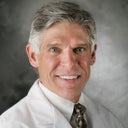Thank you for your questions regarding fat grafting (transfer) for breast enlargement. I am assuming that the 4 separate questions posed are all from the same individual, so I will address all here.In regards to "maximum" amount of fat that can be transferred to the breast, this is dependent on many factors, but the most important: The current size of your breast, the relative laxity of your breast skin and tissue and the amount of donor fat you have. The total volume of fat that can be injected in a single surgery can be enhanced with the preoperative use of the Brava Bra system, which allows for external pre-expansion of the breast envelope to then accommodate more fat. Without the use of Brava, you may be able to gain a cup size worth of enhancement. With the Brava, you can safely and reliably place 3-4x that amount of fat into the breasts. The ASPS (American Society of Plastic Surgeons) has neither endorsed nor recommended against the use of Brava for fat grafting to the breast. We know it to be safe and the research has proven it to be the only effective method for predictable, single stage "Large-Volume" fat grafting to the breasts. An alternative to Brava and Large volume fat grafting is what is known as "Bi-Lamellar Breast Augmentation". This approach utilizes a smaller implant (either saline or silicone) and the simultaneous layering of fat around the implant to smooth the contour and provide larger enhancement with a truly "natural' breast shape and feel.In accomplishing breast augmentation with fat grafting, fat is injected into and around the breast tissue, including the subcutaneous space and into the pectoralis muscle as well. Again, the current condition of your breast, symmetry and relatively density of the tissue determines where the fat is best injected. This is based on surgeon judgment and experience.The method of liposuction to be used should NOT be Ultrasonic, Laser or any other alternative to traditional, standard negative pressure. Fat grafting to the breast is dependent upon fat cell survival for a lasting result. The various methods of "assisted" liposuction all cause rupture or lysis of the fat, therefore the cells are dead when they are removed from the donor site. If this fat is injected into the breasts, it will simply resorb in time, allowing your breast to shrink again. Worse yet, the dead fat cells may cause cysts or nodular irregularities known as calcifications......all things to be avoided.My recommendation is to locate a Plastic Surgeon with experience in this type of procedure. Be certain that your surgeon is board certified by the American Board of Plastic Surgery. Schedule a consultation and he/she can discuss this procedure and alternatives with you in detail. You and your surgeon can then decide on an approach that best works to bring you the results your in search of. Good Luck!

